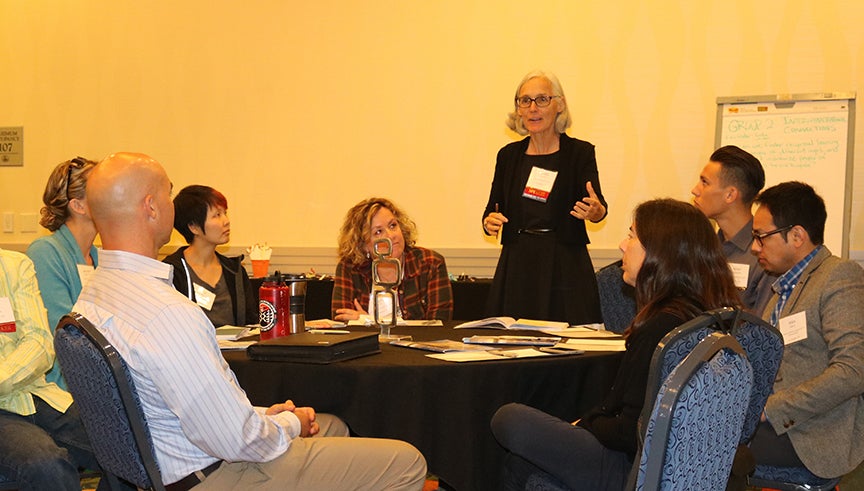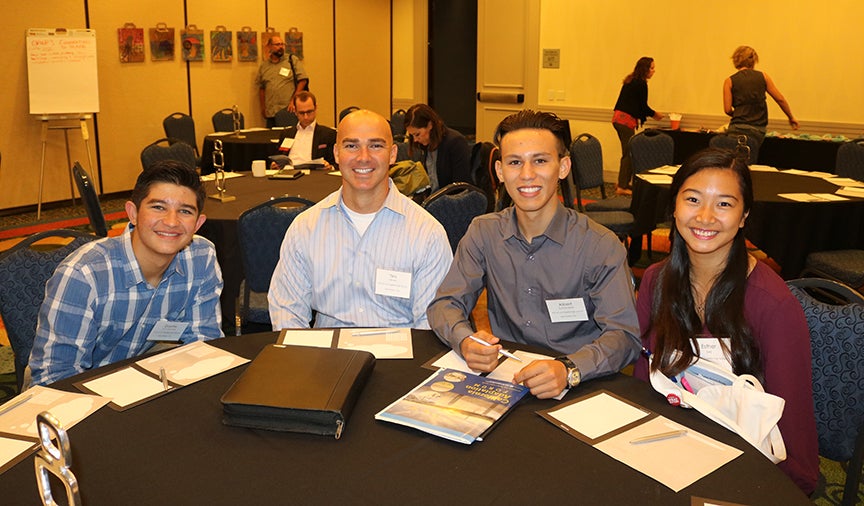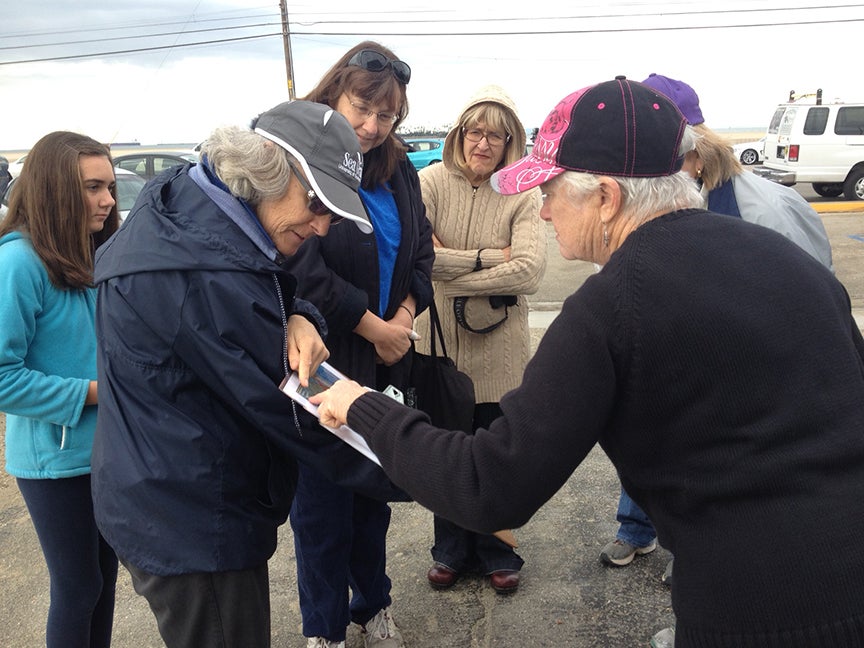
The Future is Now: Engaging Youth in Climate Change Adaptation
“The excitement of students sharing what they learn with their parents is the first step in intergenerational learning,” said Linda Chilton, Education Programs Manager at USC Sea Grant. Ms. Chilton helped lead a workshop on fostering intergenerational connections during a session titled, The Future is Now: Engaging Youth in Climate Change Adaptation at the California Adaptation Forum held September 7-8, 2016 in Long Beach, CA.
The session focused on how to engage those who will be most impacted by climate change – today’s youth, and how to integrate those voices into planning for the future. For example, how can communities reduce the risk of flooding from sea level rise? Youth will inherit communities at various stages of readiness to respond to the impacts of climate change – and many of the decisions that will affect communities for decades to come are being made now.

One of the challenges identified during the session is that historically, education separates youth and adults in learning. There is a limited connection between what adults in the community know or have experienced about climate change and what youth are learning in schools; often, community-based knowledge isn’t shared.
Creating a pathway for intergenerational learning and integrating youth voices into adaptation planning is crucial for meeting the challenges of climate change. Planning discussions typically happen within city government and opportunities for participation may be limited to ‘town hall’ style events or council meetings with little time for public input. However, actively inviting students and teachers into these forums creates an opportunity for youth and adults to learn from each other.
Another positive step to take is removing barriers to youth participation at conferences (such as high registration fees) and recognizing the essential role youth play in sharing new information with their peers and their communities. Youth influence often helps issues gain more attention. USC Sea Grant funded scholarships that allowed a teacher and three motivated students from the Port of Los Angeles High School (POLA) to attend the California Adaptation Forum and participate in discussions.
“I enjoyed the forum because it was nice to see everyone come together for the same purpose: making the world a better place,” said Ester Lee, a junior at POLA. “Through this experience, I was introduced to new methods that people from all over California have tried that were successful or could use more work. As a youth myself, I felt inspired to do my part in keeping the world a more environmentally friendly place by raising awareness – whether I’m at school, home, or wherever else I may be.”

How to respond to climate change and adapt for the future presents a complex set of issues, however, several community-based programs are leading the way of empowering youth to contribute data and participate in discussions. The Urban Tides Community Science Initiative, led by USC Sea Grant with partners at Scripps Institution of Oceanography and U.S. Geological Survey, links the observations of community members across Southern California with scientists and city leaders working on climate change. Citizen scientists, including students, take pictures of high tides, coastal flooding and erosion, and scientists use the images to determine water levels at specific locations. This information helps ground truth scientific models that project flooding from sea level rise and helps communities identify locations and people vulnerable to flooding.
Additionally, Urban Tides community beach walks provide an informal space for the public, students, scientists and city planners to interact and spark conversation about our changing coastline and how we can adapt to rising seas.
In Marin County, USC Sea Grant works with the YESS (Youth Exploring Sea Level Rise Science) project empowering youth to engage directly in climate change solutions in their own communities. The experiential education program incorporates hands-on science and digital storytelling. High school students explore how their lives will be impacted by sea level rise, collect their own data, create storytelling products, and contribute meaningfully to local science and policy decisions. City planners in Marin are committed to working with youth in classrooms and in the field collecting data, and students have the opportunity to present their data and results at community meetings.
“It’s important to recognize the impact of climate change on students and allow them to share knowledge and experience,” said Chilton. “They can identify what their concerns are in their own communities, raise awareness of managers and policy makers, and become informed voters and decision makers.”
